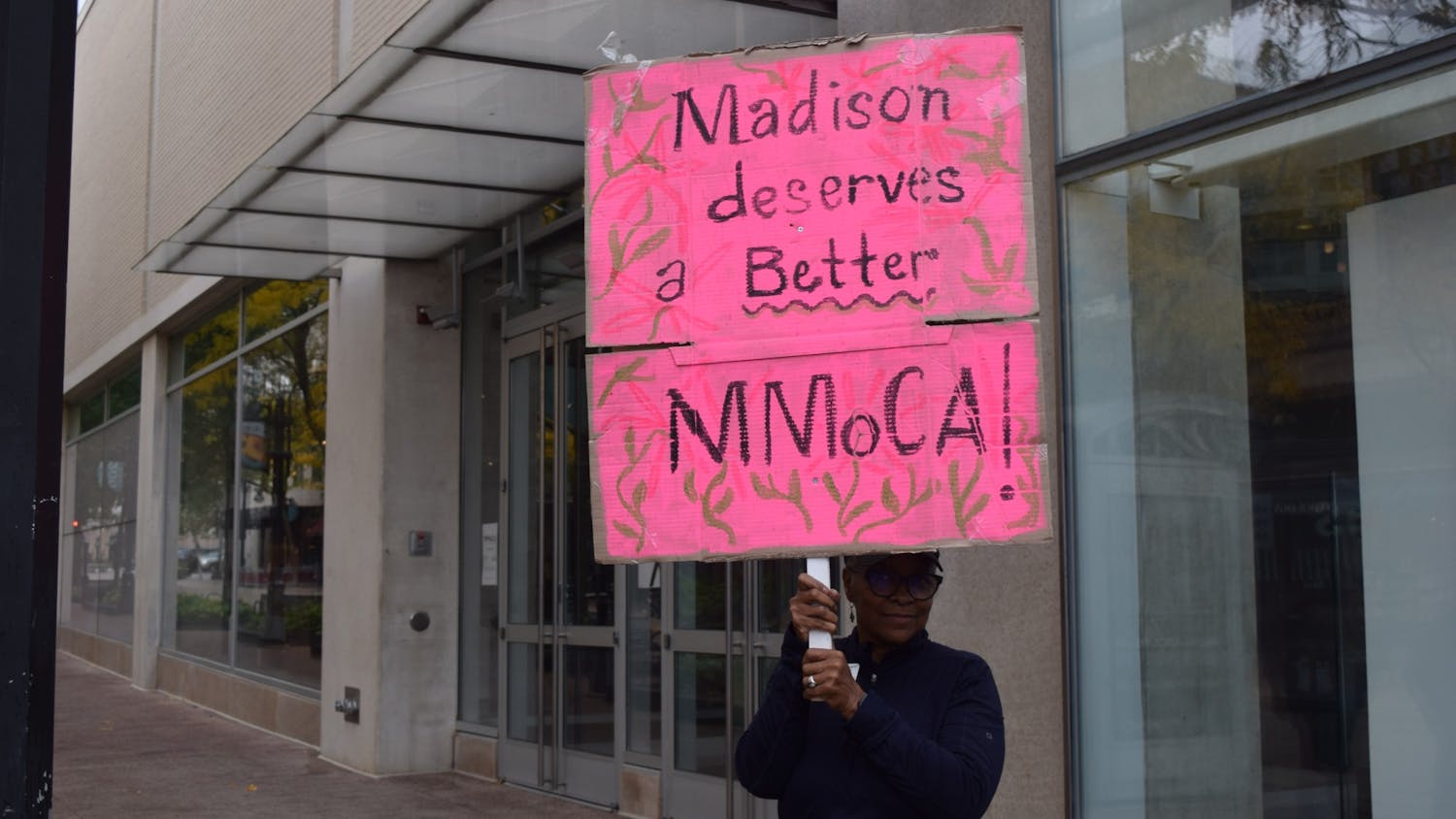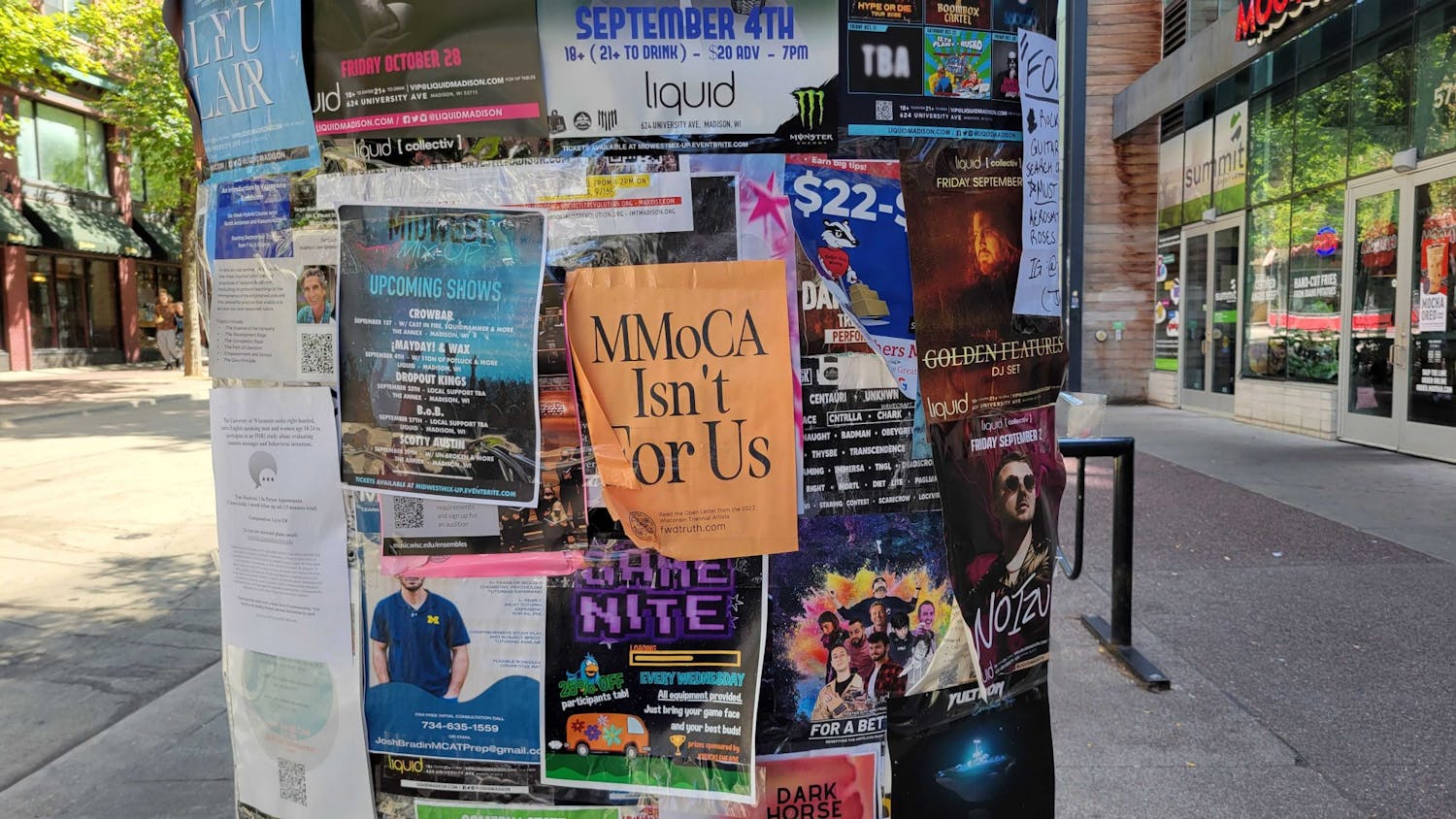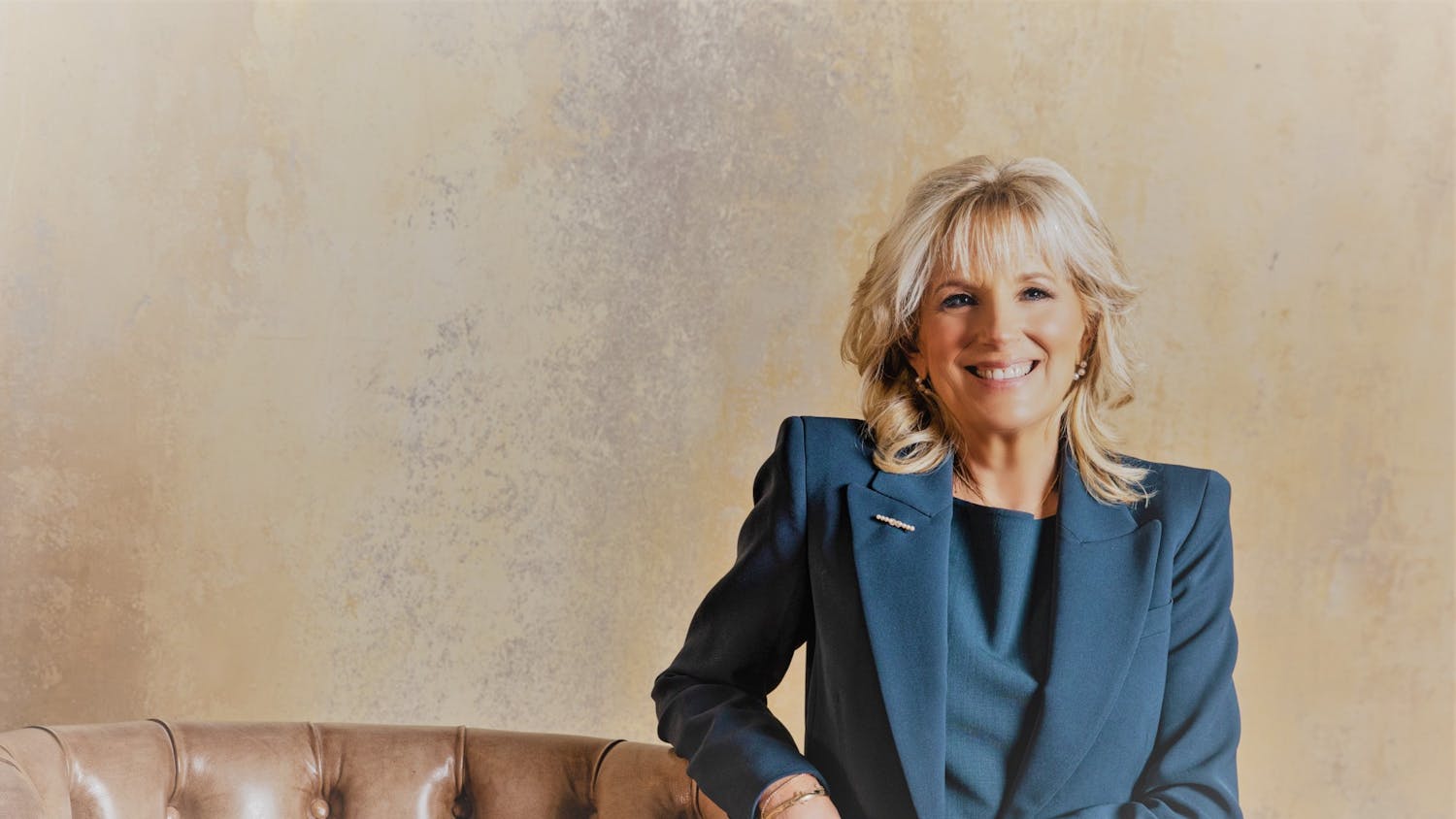What’s immediately striking about the Real/Surreal exhibit is how effectively it sucks you into its domain. The gallery itself, located on the second floor of the Madison Museum of Contemporary Art (MMoCA), is as much an unnerving display of surrealistic tendencies as the art it showcases. When you first walk in, the room opens up into slanted walls displaying the pieces of the exhibit, all slightly ajar from the implied centers of the walls, and the viewer instantly feels slightly off balance.
“The installation takes its cue from the Whitney Museum of American Art’s in terms of its color,” said MMoCA curator Richard Axsom. “The angled walls are a nod to earlier exhibits of surrealist art in the 1930s and ‘40s, where you have kind of an eccentric space. A stage set, or a city street. Everything is sort of off center.” And the effort was effective; the venue, still under construction when I saw it, nevertheless had a strange and disruptive feel to it—and yet, there was a clear purpose to the entirety of the space.
The exhibit itself was mostly pieced together using works from the Whitney museum’s permanent collection in light of the museum’s ongoing renovations. As such, the singularity of the exhibit was deliberately stressed. Or, as Axsom put it: “It’s one of the most important shows in the region of the year.”
Axsom led me through the gallery to advertise and expound upon its fulcrum pieces, works which fully elaborated the installation’s vocation—to explore the malleable divide between the competing styles of 20th century American surrealism and realism.
“[Surrealism is] an art movement from Europe that deals with Freud, the unconscious, sexuality, complexity of personality, the irrational and the illogical,” explained Axsom. “If you think of that and then think of [realist painter] Thomas Hart Benton and company—there was certainly a conflict… in a sense it was, ‘which is the appropriate style for modern American art?’ And there are those who said, no way it can be surrealism.”
“There was not a realist art movement, there was a style,” Axsom said. “And what makes [Real/Surreal] provocative is that [realism and surrealism] would seem to be antithetical. Here’s the real world, and here’s this world gone crazy. It’s not real at all, it’s hyper or surrealality—that is, the reality of dreams. [Whitney Museum curator] Carter Foster sees that slash as being somewhat porous, and I want to show you how he sees that way.”
The first pieces I saw were a triptych of intention. Axsom directed me towards legendary founding surrealist Man Ray’s “La Fortune” as a sort of primer to the more bizarre side of the exhibit.
“This is of course nothing you’re going to see in everyday reality,” Axsom said of the painting. “The perspective is off, the clouds are not natural at all, this billiard table is at an angle that makes no sense, and the billiard balls are not falling; they’re sort of frozen. It’s the stuff of dreams.”
“La Fortune” looked like something from the Salvador Dalí vein of experimental art, with specific details culled from the natural world, only to be arrayed in a confusing and disorienting juxtaposition.
Axsom then directed me towards George Tooker’s “The Subway,” a perfect marriage between realist and surrealist sensibilities. The piece’s realist shades were the most immediate on display, with a woman walking through what looks like a New York subway, surrounded by throngs of individuals.
“You could conceivably be walking through and see this woman walking through and the people walking through, back and forth, but there are certainly some alterations he’s made which give it a disturbing quality,” said Axsom. And sure enough, look close enough and the work’s more unsettling qualities begin to ooze through—all the men have the same indistinct face and none of the corridor’s perspectives align properly.
“He’s taken everyday reality ad made it magical without upsetting the predictability of the real world like Man Ray does … Tooker’s considered a magical realist.”
At the final corner of the entryway’s triangle was one of Marsden’s Heartly’s paintings. With hints of impressionism, the work was a loose and flexible interpretation of an ancient stone structure, toppled in the middle of an ominous clearing. It was puzzling in idiosyncratic depiction of reality, but lacked the unnerving quirks of “The Subway” or “La Fortune.”
“There’s nothing here that approaches the weird, slight alterations of Tooker … there’s a mundane, everyday quality to it, that doesn’t seem to be disrupted by what Man Ray does, or Tooker,” said Axsom.
From there we moved onto Edward Hopper’s “Cape Cod Sunset,” my personal favorite of the collection. In the work, Hopper, known primarily for his iconic “Nighthawks” painting, flirted with surrealism much in the same way as Tooker, splicing the uncanny into an otherwise transparent depiction of the real.
At first glance the painting’s a straightforward portrait of a quiet Cape Cod house. it’s only when you notice the lack of detail and human presence, and the unnaturally straight and even forest in the background that gives way to blackness that the piece begins to frighten. The piece’s quiet unraveling of expectations and assumptions was astonishing—even as an early work of Hopper’s, it still held its own as a powerful work by one of the great artists of the 20th century.
Next we went to one of John Wilde’s works, an alumni of Madison and an art teacher until his death. Wilde’s work blended together with Man Ray’s, birthing a scene which at every level defied literal interpretation.
“Wilde was very much a surrealist—not the magic realism of Tooker or this sort of enigmatic realism of [Andrew] Wyeth or Hopper, but giving you a scene that’s just so mysterious, giving you things that just have no explanation for being.” Wilde’s work was certainly the most confounding piece of the tour, featuring a carefully detailed portrait of a woman in a barren landscape, eating an apple, adorned with bugs and surrounded by prostrate scraps of minutia and trash.
“There are insects all over her, which implies, disarmingly, that her pallor is as deathlike as it is lifelike. A mix of beetles and butterflies, beautiful and ugly … these incongruities are part of the surrealist vision… it’s almost like Freudian free association. It’s disruptive, irrational, and what you’re left with is a sense of surrealist mystery.”
Axsom’s tour was certainly a helpful cypher for the encrypted world of the ever-alienating surrealist movement, but even without him the gallery proved to be a powerful showcase of thought provoking artistry.
“What we’re so pleased about is that this exhibition features major American masters of the period, with major important pieces… If I were to give a talking point as to why people should come to the show, well, yeah, it would be that,” Axson said—but even without his benediction, the gallery still works on its own as a fantastic showcase of the esoteric and the avant-garde as it fits into America’s storied art history.
Appreciate Cameron’s art criticism? Be sure and tell him at cgraff2@wisc.edu






